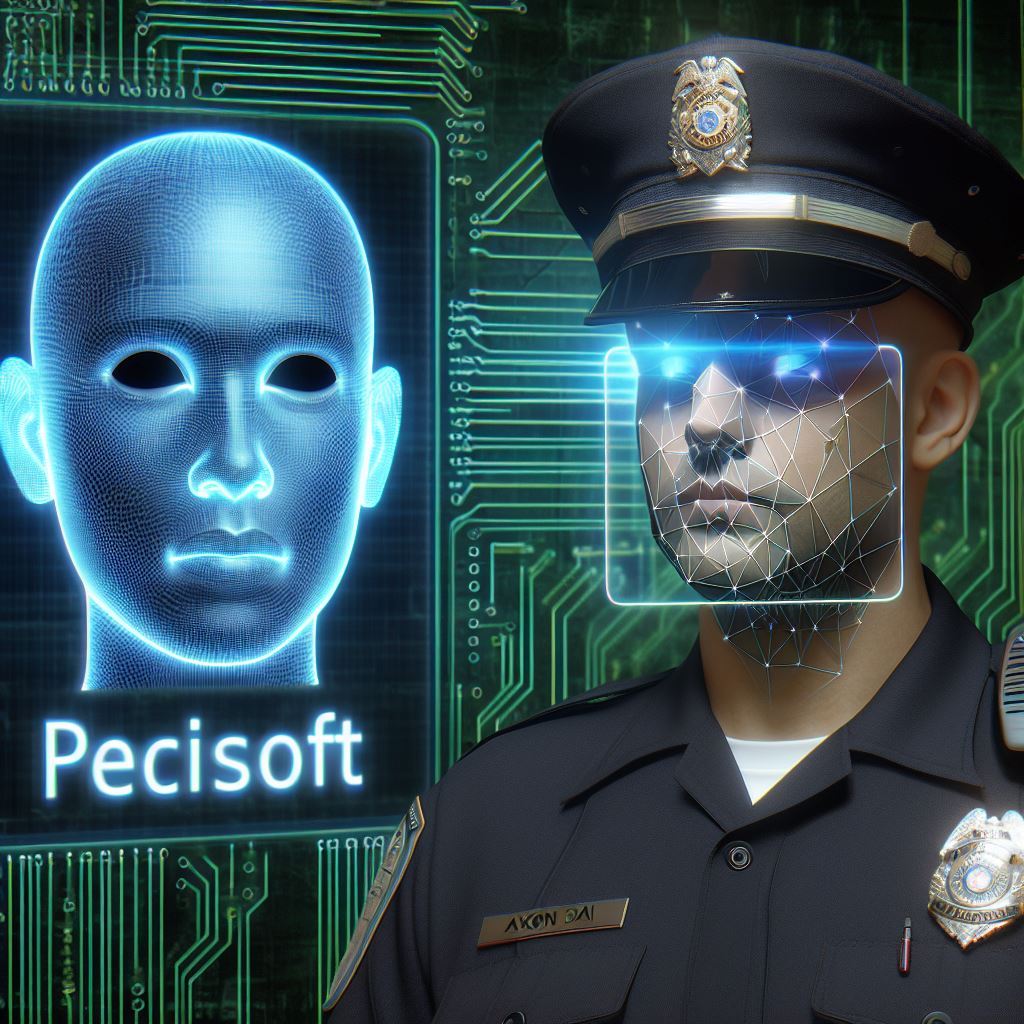Microsoft’s Ban on Police Use of Axon AI Facial Recognition

The world of law enforcement technology is constantly evolving, with a recent clash highlighting the ethical concerns surrounding AI. This blog post dives into two key stories: Microsoft’s ban on police using its Axon AI facial recognition technology and Axon’s own launch of an AI-powered report automation software.
Microsoft Draws the Line on Axon AI Facial Recognition for Police

In a significant move, Microsoft has updated its code of conduct for its Azure OpenAI Service, explicitly prohibiting US police departments from utilizing the service for facial recognition purposes. This ban extends to integrations with the service, preventing “real-time facial recognition technology” used by law enforcement globally for in-the-field identification or suspect/inmate database searches.
This decision comes amidst growing concerns about the potential misuse of facial recognition technology, particularly regarding racial bias and inaccuracies.
Axon Automates Reports with AI, Raising Concerns

On the other hand, Axon, a prominent manufacturer of law enforcement equipment, recently launched Draft One – an AI-powered software program designed to automate police reports. Draft One leverages OpenAI’s powerful large language model (LLM), GPT-4, to transcribe audio from Axon body cameras and generate “high-quality police report narratives in seconds.”
While Axon touts Draft One’s efficiency, critics raise concerns about the potential for AI “hallucination,” where the system fabricates information or skews facts. This could absolve police of responsibility for inaccurate reporting. Additionally, some experts express worry about police officers lacking proper training to utilize such complex AI tools effectively.

The Future of Law Enforcement Technology: Balancing Innovation and Ethics
The contrasting approaches of Microsoft and Axon highlight the ongoing debate surrounding AI in law enforcement. While advancements like Axon’s AI-powered reports hold promise for streamlining processes, ethical considerations regarding accuracy and potential bias remain paramount. As Axon AI technology continues to evolve, it’s crucial to find a balance between innovation and responsible implementation within legal frameworks.
Other Examples of AI in Law Enforcement

You know, it’s really amazing how technology has advanced in the field of law enforcement. It’s not just about catching bad guys anymore; it’s about preventing crime and keeping everyone safe. There are some really cool things going on right now that I wanted to share with you.
1. Facial Recognition
Have you ever seen one of those shows where they take a grainy security camera image and magically turn it into a clear picture of a suspect? Well, that’s kind of what facial recognition technology does. Police departments use it to identify criminals on the run and locate missing people too. It’s like having a super-powered version of those old school yearbook “guess who” games.
2. Cameras
Surveillance cameras are everywhere these days. You can’t even turn around without seeing one. But you know what? They’re not just there for show. They help law enforcement keep an eye on public spaces and gather evidence when they need it. It’s like having a bunch of extra sets of eyes all over the place, watching out for everyone.
3. Predictive Policing
One of the coolest things about AI in law enforcement is predictive policing. With all the data they have at their fingertips, they can predict where crimes are likely to happen, who might be involved, and even what kind of crime it’s going to be. That helps them allocate resources more efficiently, which means they can keep more people safe with fewer officers. It’s like being a detective and a fortune teller all rolled into one.
4. Robots
Did you know that robots are helping out in law enforcement too? They can do all sorts of things like bomb disposal, surveillance, and even search and rescue. It’s like having a real-life action figure on the force, ready to tackle any challenge that comes their way.
5. Non-Violent Crimes
Not all crimes are violent, and AI is helping law enforcement focus on the ones that aren’t. By analyzing patterns, they can predict where non-violent crimes are likely to occur and allocate resources accordingly. It’s like being a detective with a crystal ball, only way more useful and a lot less creepy.
6. DNA Analysis
DNA analysis has come a long way since those old CSI shows. AI is helping law enforcement analyze DNA samples, which means they can solve cold cases and identify suspects faster than ever before. It’s like having your own personal CSI lab right at your fingertips.
7. Gunshot Detection
Gunshot detection systems are another way AI is making law enforcement safer and more efficient. These systems can pick up the sound of a gunshot from miles away and alert the authorities in real-time. That means they can get to the scene faster, which could mean the difference between life and death. It’s like having a super-hearing superpower.
8. Crime Forecasting
Finally, AI is helping law enforcement predict future criminal activity by analyzing historical crime data. That means they can allocate resources more effectively and focus on prevention instead of just reacting to crimes after they happen. It’s like being a detective who can see into the future, only in a completely responsible and ethical way.
These are just a few examples of how AI is changing the game in law enforcement. It’s pretty amazing to think about what they’ll come up with next. Who knows? Maybe one day we’ll have robot cops that can solve crimes while they’re still happening!
The Challenges in Implementing AI for Law Enforcement

Implementing artificial intelligence (AI) in law enforcement presents both opportunities and challenges. Let’s explore some of the key hurdles:
- Ethical and Legal Concerns:
- Privacy: AI systems often process sensitive data, raising privacy concerns. Striking a balance between effective policing and individual privacy rights is crucial.
- Bias and Fairness: AI algorithms can inherit biases from training data, leading to discriminatory outcomes. Ensuring fairness and transparency is essential.
- Data Quality and Availability:
- AI models require high-quality data for accurate predictions. Law enforcement agencies may face challenges in obtaining clean, comprehensive data.
- Data Silos: Different agencies may have separate databases, hindering data sharing and integration.
- Algorithmic Transparency:
- Understanding how AI decisions are made is critical. Black-box algorithms can be problematic, especially when explaining outcomes to the public or in court.
- Resource Constraints:
- Developing and maintaining AI systems requires skilled personnel, infrastructure, and financial resources. Smaller agencies may struggle with these demands.
- Human-AI Collaboration:
- Striking the right balance between human judgment and AI recommendations is challenging. Overreliance on AI can lead to errors or missed nuances.
- Adversarial Attacks:
- Malicious actors can manipulate AI systems by introducing subtle changes to input data. Ensuring robustness against attacks is vital.
- Accountability and Liability:
- When AI systems make mistakes, who is responsible? Establishing accountability frameworks is complex but necessary.
- Public Perception and Trust:
- Building public trust in AI-powered law enforcement is essential. Transparency, clear communication, and community engagement are key.
- Regulation and Oversight:
- Balancing innovation with regulation is challenging. Policymakers must create guidelines that foster responsible AI adoption.
- Unintended Consequences:
- AI systems may inadvertently amplify existing biases or create new ones. Anticipating unintended effects is crucial.
What Is a Stargate? Unveiling Microsoft and OpenAI’s $100 Billion Supercomputer Project
Microsoft Market Cap Shatters $3 Trillion: The AI Titan Ascends the Tech Throne





